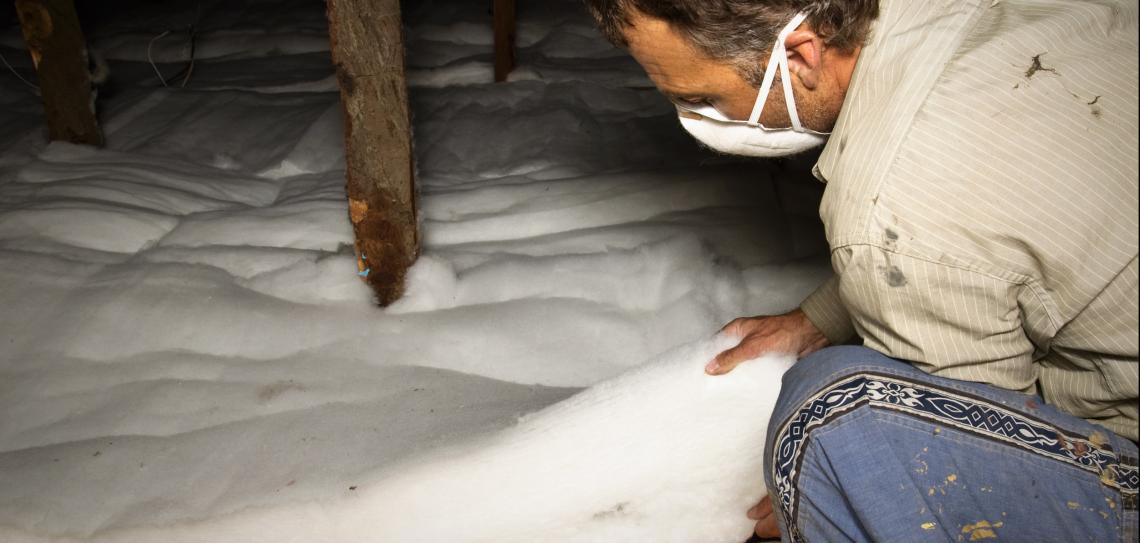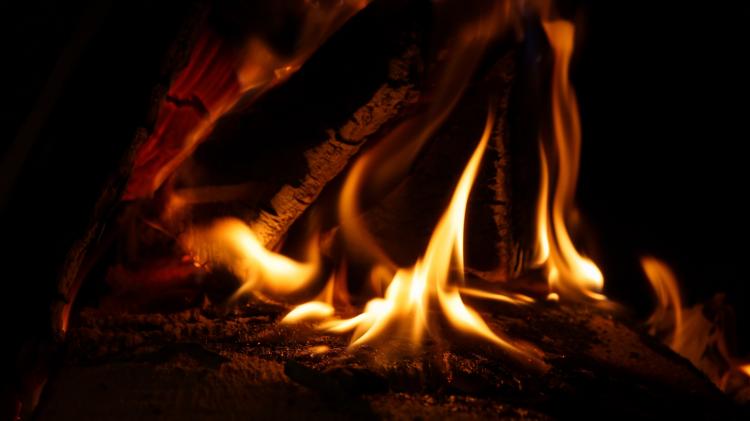
Warm your home efficiently
We all need to keep our homes warm in winter. But heating your home consumes both CO2 and money. Small behaviour changes, draughtproofing and good insulation could halve the amount of heating you use with no reduction in comfort. A full home retrofit will make even bigger savings.

For most people, home heating is their biggest single producer of greenhouse gases. In the UK, for example, 60-70% of household energy consumption is from heating. The heat for your home most likely comes from burning fossil fuels either on site or at a power station. Even using wood fuel has a number of environmental problems. Fuel is also expensive, so saving money and saving emissions are fully aligned.
Where can you save?
Start with working out how much heating you currently use. This is best done by looking at your fuel bills, whether from a utility company or from a fuel merchant. A smart meter will help you measure the energy usage of your heating. Consider hiring an energy auditor to evaluate your home; this will soon pay for itself. Set a goal for fuel use reduction; if your home is completely unimproved, this could be as much as half. There are two kinds of changes to make: behavioural changes, which cost nothing, and structural changes, which vary enormously in cost but will generate big savings.
Six behavioural changes that cost nothing
- Turn down the heat. Many homes are overheated. Aim to heat your house to 18C/65F. If you have a thermostat, set it to this level. If you don't, get a wall thermometer or a heat logger.
- Put on a jumper. In cold weather wear a warm jumper and slippers. Get warm winter sleepwear. If you're too hot, turn the heating down instead of removing clothes.
- Move furniture. Move sofas, desks, beds and chairs that block heat from radiators or stoves. Think about how heat is flowing around your rooms.
- Only heat the rooms you use. Turn down (or turn off) heating in any unused or underused rooms. If you have programmable heating, set it to off or minimum when you're out, or asleep. Keep internal doors shut.
- Heat with sunshine, it’s free. Open the curtains/ drapes on your home's sunny side during the day. You can remove vegetation and fencing that shades the windows, but consider the risk of overheating next summer.
- Avoid standalone room heaters. Standalone or plug in heaters are expensive and inefficient. Use them only if you really have to, and never as your main source of heat.

Six structural changes that will pay back in two years
- Block draughts. Up to 25% of heat loss is through draughts. Walk round on a cold, windy day and check doors, windows, loft hatches, keyholes, uncovered floorboards, and where pipes and cables go outside. Use draught excluders, rubber strips, wooden beading, silicone sealant or foam fillers. Make sure there are no gaps - if there are, heat will flow out, just like water would. Bathrooms, kitchens and open fires need natural ventilation, so never block air bricks. If you never use the chimney, get it blocked. If you don't use it in summer, install a chimney balloon.
- Insulate the loft and the pipes. Around 25% of home heating is lost through the roof. This can be easily reduced by installing 25cm/10” of insulation. Insulate all pipes, especially those in unheated spaces or outside. If you have a hot water tank fit a jacket.
- Plant a windbreak. Plant on the windy side, at a distance twice the mature tree height. Combine with a wall, fence, or earth berm to lift cold winds over the home. Be careful not to shade your home's sunny side.
- Surround your house with plants. Shrubs, bushes, and climbing vines create dead air spaces that insulate your home.
- Install secondary glazing and a storm door. Secondary glazing works by fitting a pane of glass and frame inside the existing window. This is less effective than new double glazed windows, but considerably cheaper. Adding an external storm door gives an extra layer of protection from the weather year-round. Check the external frames of windows and doors are in good shape; repair if necessary.
- Get insulated curtains/drapes. These provide a layer of insulating air between curtain and window. Make sure you don’t have any leaks or gaps, and add a pelmet. Avoid long curtains/ drapes that cover radiators.
Six structural changes that will pay back in five to 10 years
- Insulate the walls and floor. In an uninsulated home, 35% of heat is lost through the walls and 15% through the floor. Adding an insulating material beneath the floorboards, or just a thick carpet, will reduce heat loss. Both cavity and solid wall insulation will wrap your home in a warm blanket; check your energy supplier and local government to see if they have subsidies available.
- Upgrade your boiler or air pump. If it's more than 10 years old, replace it with a new, more efficient model that uses less energy to produce the same effect.
- Replace your windows. All properties lose heat through their windows. Installing energy efficient (low-e) double glazing will more than halve heat loss through the windows. Also consider triple glazing; more efficient but more expensive.
- Buy an intelligent heating system. These can set multiple time and temperature requirements and create a personalised heating plan. They can be linked wirelessly to your phone, so you can turn the heating on as you leave work.
- Install a new heating system. Read Action 36: 'Change your heating', and Action 10: 'Generate your own electricity' to learn when you should do this.
- Undertake a full home retrofit. In the long run, this will normally be the cheapest and best option. It will include most of the changes listed above and reduce carbon emissions by 66-100%. This can have a high up front cost if you do it well. A full retrofit can be done in stages, dealing with the biggest or most affordable opportunities for improvements first. It can have greater challenges with older buildings, so work with an experienced retrofit contractor. Get more guidance from the Responsible Retrofit website.
Picture credits: 1) Simon Williams - https://www.flickr.com/photos/jinjasi/4463337655/ 2) Jacque Suhlemann - Pixabay.com
Do a home energy assessment
Implement a systematic plan to reduce your heating needs
Suggest neighbours and family follow your example
Campaign for subsidies for energy efficient home improvements



